Preaching to the choir? Liverpool Biennial 2021: The Stomach and the Port – Reviewed
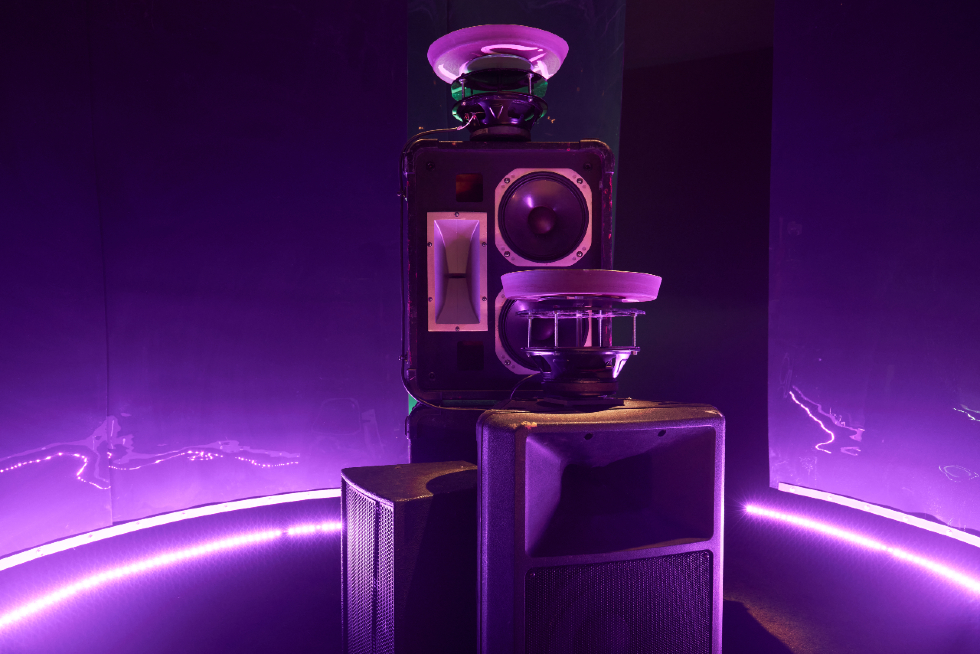
Surviving a global pandemic and a change of director, it’s a small wonder that Liverpool Biennial 2021 emerged at all. Mike Pinnington, relishing the chance to get up close and personal with art once more, reviews its indoor phase…
After viewing art largely via a screen for the past year, the much-delayed Liverpool Biennial is finally open. And, I don’t know if it’s because of the various lockdowns, but it seems more sprawling than ever. Over the course of three days, I took on The Stomach and the Port (this iteration’s subtitle) and its attendant themes: stomach, porosity, and kin. For those bemused by such things, the good news is that none of them is too overbearing – you can take from them what you will. As a veteran of this city’s festival of contemporary art, though, my policy has long been to take each venue on face value and, if possible, join the thematic dots later. (A note: I’ve not covered everything on show in this review).
My Biennial-ing odyssey began at Tate Liverpool; the first gallery out of the blocks and a key constituent of the Stomach/Waterfront Trail. There, a disjointed quartet of female artists of different generations are put loosely in conversation with one another. Ithell Colquhoun (a Tate collection artist) was an occultist interested in the relationship between women and the natural world. Here, a meagre number of her paintings are found, in seemingly scattershot manner. “One of the most important figures in British surrealism” as it says on Tate’s website, is badly underserved.
Judy Chicago and Linder are similarly lost in space; their reputations preceding them, these feminist firebrands too easily overlooked. Jutta Koether, due in part to the scale and vibrancy (lots of reds) of her abstract-ish paintings, fairs better. As do the uncanny assemblage of Nicholas Hlobo, and Ebony G. Patterson’s installation …when the cry takes root… (2021), a work whose colours and tactile materiality belies its role to commemorate loss, indicated by a transparent body, poking out from its edge. Cue lots of Instagramable snaps.
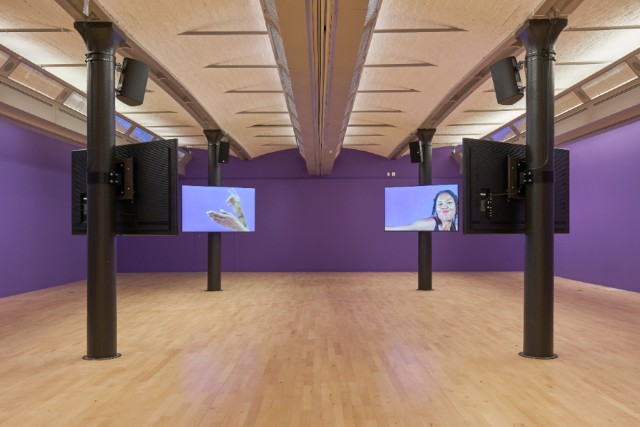
The star at Tate, however, is Martine Syms’ Borrowed Lady (2016, pictured above). The 4-channel video installation sets its sights on the appropriation of Black female gestures rife in mainstream culture and the advertising industry and lands a direct hit. Using video as the medium by which to turn said messaging back on itself (like a latter-day Pictures generation artist), Syms has fun while making her unmistakable point loud and clear. Spend time with this work, consider the countless occasions you’ve seen the borrowed lady of the title in otherwise largely white casts, in film, TV and the ads in-between shows. She’s everywhere. The work is no mere shot across the bows and, perhaps, a signal as to this Biennial’s intent.
Elsewhere on the Albert Dock, in the Dr Martin Luther King Jr Building, is another video installation, David Zink Yi’s Horror Vacui (2009). In it we are privy to Afro-Cuban band De Adentro y Afuera rehearsing – there is obvious joy here, people lost in music made together. It’s infectious. Like friends who haven’t seen each other lately falling back into easy, spontaneous conversation, Zink Yi’s film demonstrates the power of renewing and celebrating collective identity.

A short walk away, at Open Eye Gallery, Zineb Sedira’s 2013 Sugar Routes series of photographs (above) take centre stage. The pictures depict huge silos in Marseille housing literal mountains of sugar. Commenting on triangular trade routes originating in the eighteenth century and making plain the ongoing contemporary sugar trade, their scale and historical context – the forced movement of people along those same routes and its legacy – cast a monumental shadow. This is echoed in Alberta Whittle’s between a whisper and a cry (2019), a moving meditation on colonialism’s afterlives, in which one woman laments “I’m a long way from home.” Afterwards, passing the Victoria Monument on Derby Square (the new site for Teresa Solar’s Osteoclast (2021)), it’s hard not to reflect on the old adage the sun never sets on the British Empire, and wonder about the residual, ongoing damage wrought.
Over at Bluecoat, a pair of artists whose works deal with different kinds of exchange have stuck with me. The abstract paintings of Jadé Fadojutimi, with their dramatic, gestural strokes, fairly leap from the gallery walls – a riot of colour in which your eyes search for illusive shapes, figures and forms. As the wall text implies, everything is in flux, so that you can never quite pin them down; a metaphor, perhaps, for life lived in the thick of it, and for how the people and things that we encounter leave their mark before moving on.
The sculptures of Kathleen Ryan, meanwhile, depict beauty on the turn; her Bad Fruit (2020) series a crystalline memento mori, emphasising matter and its inevitable decay. Ryan says that she chooses gemstones to underscore wealth inequality, with the most expensive of these stones reserved to illustrate the rot. They are beautiful, alluring objects, pointing to the unmistakable darkness at capitalism’s, and society’s, core.
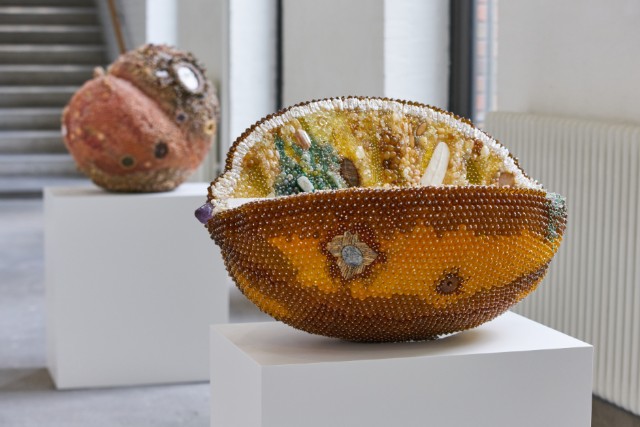
FACT plays host to the much-vaunted Black Obsidian Sound System, a collective recently nominated for the Turner Prize. Their audiovisual installation, The Only Good System is a Soundsystem (2020, pictured, top), foregrounds and celebrates that culture as a space of solace and collective strength for Queer, Trans and Intersex Black and People of Colour to mobilise against discrimination. It’s a story I knew little about and wanted to hear. The installation, unfortunately, is somewhat underpowered. Bass, surely central to soundsystems success, or otherwise, and the “club-like experience” promised by the blurb, is sadly lacking. Sure, it’s dark, but it doesn’t otherwise scream the communal experience of a night out with your besties. Volume was a problem, too; I strained to hear the stories collected by B.O.S.S, and spent most of my time wishing somebody somewhere would turn it up to eleven. A missed opportunity that doesn’t do nearly enough justice to its subject.
Zheng Bo’s Pteridophilia (2016–) almost suffers the opposite problems volume-wise – you can hear the groans of pleasure before you reach the top of the stairs. Zheng’s recordings of young men in congress with assorted flora in a forest in Taiwan is a comment on queering ecologies, illustrating the rejection of binary states such as human and non-human. Although raising pertinent questions about the perception of communities outside of the ‘norm’ (a term which has surely never been of less use), the work’s graphic nature might leave even those engaged with contemporary art mystified as to its intent (and, dare I say it, value). Beware family groups haphazardly encountering the work – no punches are pulled!
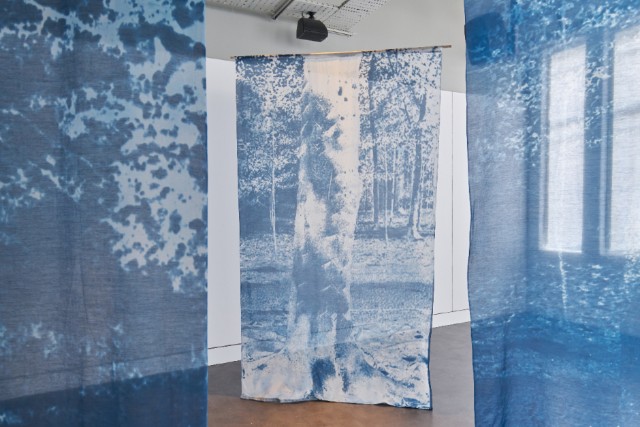
There is no such confusion in Lush. Resigning yourself to the olfactory assault of the cosmetics store, you’re swiftly rewarded by the bountiful oceanic world of Ayesha Hameed’s audio/textile work, I sing of the sea, I am mermaid of the trees (2021, above). Its siren sound washes gently over you as you are enveloped by hanging fabric sheets evoking a forested seascape. The didactic, describing the circumstances of the laying of the telegraphic cable between India and Britain in the 1860s, can only hint at the richly woven narrative I sing of the sea immerses the listener in. “Trees on the forest floor sing their last songs/ Lie as they bleed white tears…” It’s mesmerising, transporting, and it mournfully articulates British Imperialist violence done to peoples and the marine environment; the cable as ‘strangulating umbilical cord’ of Mother Britain.
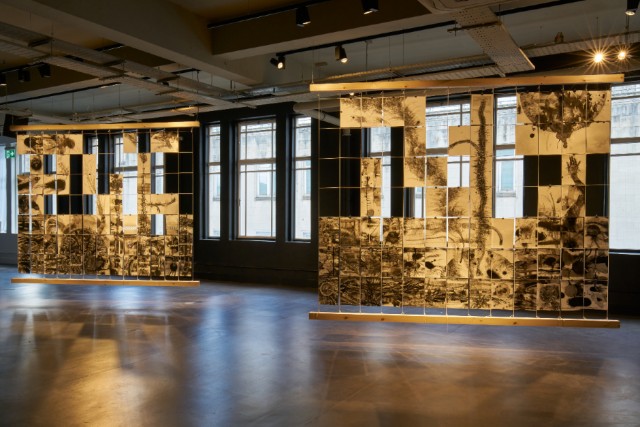
Adjacent to which is Christopher Cozier’s turbulence (2021, above). In stark black and white, the imposing multi-panel work occupies space, both literally and figuratively. Comprised of numerous interconnected paper tiles, it tells the story of Big Oil, particularly as it relates to Cozier’s homeland of Trinidad and Tobago. Black ink smears collide with and subsume bodies, needles break the surface of skin and drills pierce the land. Blood, oil and currency flows with abandon. Here, the impact made by an industry hellbent on eating through resources (fossil fuels and the living both) is vividly and brutally illustrated. Referring to different parts of the world, Hameed’s and Cozier’s works eloquently tell the stories of colonialism, profit and perceived progress at all costs, giving a voice to those on the receiving end – then and now.
For me, such works are exemplars of the Biennial mission: using eye-catching but meaningful contemporary art to transmit ideas and tell affecting stories we might not otherwise hear or find time for. Great art that makes us look – and think – twice. This Biennial isn’t lacking in meaningful works; in this respect, it’s a solid entry in its history.
If you sense a ‘but’ coming, you’d be right to. With some exceptions, there are too few artworks, interventions, events or spectacles in the current programme that will garner sufficient interest beyond the aficionados, the artists and the curators. For those of us who don’t need convincing, it is a relief to get back into galleries, to spend time with art and ideas up close and personal. But this is a Biennial very much preaching to the choir and, in a time that requires making the most of the local(e), it falls short. Getting the city (not just the sector) on-board, and capturing the imaginations and the enthusiasm of harder to reach members of the audience, doesn’t seem to have been on the agenda.
Mike Pinnington
Read Mike’s Liverpool Biennial 2021 Public Realm Review
See Liverpool Biennial 2021: The Stomach and the Port online and in venues across the city until 27 June
Images, from top: Black Obsidian Sound System (B.O.S.S), The Only Good System Is a Soundsystem, 2021. Installation view at FACT, Liverpool Biennial 2021; Martine Syms, Borrowed Lady, 2016. Installation view at Tate Liverpool, Liverpool Biennial 2021; Zineb Sedira, Sugar Routes I, 2013; Kathleen Ryan, Bad Fruit (series), 2020. Installation view at Bluecoat, Liverpool Biennial 2021; Ayesha Hameed, I sing of the sea, I am mermaid of the trees, 2021; Christopher Cozier, turbulence, 2019–2021. Installation view at Lush Building, Liverpool Biennial 2021. All photography by Rob Battersby





